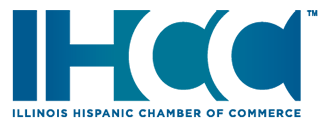From the launch of the Paycheck Protection Program (“PPP”) on April 3, 2020, through June 15, 2020, 5,458 lenders have approved loans to over 4.5 million small businesses for over $511 billion dollars.
The SBA published an updated Paycheck Protection Program Report with additional details.
To put some scale around the size of the program, for the last five years, the SBA has averaged annual total loans approved under its 7(a) small business loan program (the same umbrella under which PPP loans fall) of roughly $17.4 billion.
Accordingly, in April and May of 2020, the SBA has processed roughly 29 years worth of SBA loans.
While the rate of PPP loans being improved has slowed greatly, as discussed more below, this still highlights the size of the program and the strain under which the SBA has been operating.
Average Loan Size

The overall average size of a PPP loan is now approximately $113 thousand. This is down significantly from the first round of PPP funding, where the average approved PPP loan was $206 thousand.
Based on the formula for PPP lending, this means the average borrower likely had monthly payroll costs of approximately $45 thousand.
Of course, the average size of PPP loan is certainly affected by a relatively small number of larger loans.
As reflected above, the majority of loans made were for loans of less than $50 thousand (reflecting monthly payroll costs of less than $20 thousand).
Over 85% of the total PPP loans made were for less than $150 thousand, and over 93% of the total PPP loans made were for less than $350 thousand.
While significant ink (digitally and otherwise) has been spilled on larger PPP borrowers, less than 2% of the PPP loans made were for more than $1 million.
These size thresholds will hopefully support a decision by the Treasury and SBA to offer a simplified forgiveness application for smaller loan sizes.

As the amount of work on the forgiveness application (by both the borrower and the lender) are unlikely to significantly change based on the size of the loan, allowing a simpler process for smaller loans could have a significant impact on the organizational cost of completing (and reviewing and approving) loan forgiveness applications.
We are currently hearing support for such a simpler process, with the primary question being the correct threshold for the “EZ” application process.
Current rumors appear focused on either $150 thousand (over 85% of borrowers and 26% of the dollar amount lent) or $350 thousand (over 93% of borrowers and 42% of the dollars lent). Either would be a blessing for borrowers and lenders.
View the full SBA Paycheck Protection Program Report
This Economic Analysis was made for the Illinois Hispanic Chamber of Commerce by the BANK BCLP Bryan Cave is a global law firm with approximately 1,000 highly skilled lawyers in 27 offices in North America, Europe and Asia)


